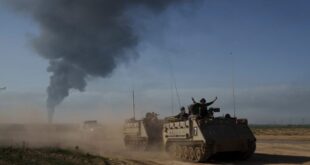The U.S. Army will divest all Stryker Mobile Gun Systems by the end of fiscal year 2022. This decision comes after a comprehensive analysis highlighted obsolescence and systemic issues with the system’s dated cannon and automatic loader.
While updating and providing new capabilities is most commonly associated with modernization, the divestiture of obsolete systems is also an essential component because it frees up resources and manpower that can be applied to other critical capability needs.
“Decisions on when it is best to divest a system currently in the force are not taken lightly,” said LTG James F. Pasquarette, Army Deputy Chief of Staff, G-8 (Programs). “The Army has done its due diligence to ensure lethality upgrades will remain intact to provide our Stryker formations the capabilities they need in the future.”
In the early 2000s when it was developed, the Stryker MGS was state-of-the-art technology and provided needed capabilities to our Soldiers. For over 15 years, the Stryker MGS has enabled Stryker brigade combat teams to provide direct supporting fires to assault infantry by destroying or suppressing hardened enemy bunkers, machine guns and sniper positions in urban, restricted and open-rolling terrain.
It was the first Army system fielded with an autoloader, but over time it has become costly to maintain. In addition, the lethality capabilities provided by the Stryker MGS were based on the flat-bottom chassis, and the system was never upgraded against more modern threats such as improvised explosive devices or anti-tank mines.
After reviewing concerns and vulnerabilities of the Stryker MGS, Army officials made the decision to invest in other substantial modernization efforts to improve the lethality, survivability, maneuverability and maintainability of the Stryker fleet.
New and upgraded lethality efforts such as the Medium Caliber Weapons System, the Common Remotely Operated Weapons Station–Javelin, Anti-Tank Guided Missile updates, and the 30 mm cannon provide a better distributed capability than the limited number of Stryker MGSs. All of these enhancements have been developed and funded, and are ready to be fielded.
The divestiture of the Stryker MGS poses no impact to the industrial base as the system has been out of production for some time, and the majority of the sustainment supply chain for the MGS is included in other variants of the current Stryker fleet.
During the divestiture, the Army will continue to invest in more cost-effective solutions to meet the limited capability gaps that have not yet been met by other lethality improvements.
The Army will continue to support and field different variants of the Stryker platform, including the Double V-Hull and Lethality vehicles, until the MGS is fully divested.
 Eurasia Press & News
Eurasia Press & News



